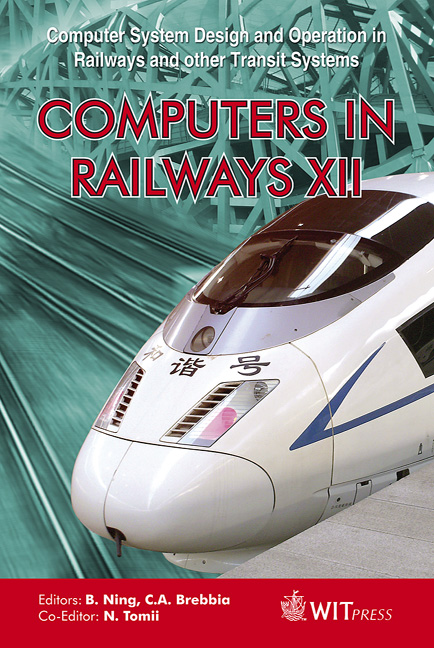Train Tracking Problem Using A Hybrid System Model
Price
Free (open access)
Transaction
Volume
114
Pages
9
Page Range
89 - 97
Published
2010
Size
400 kb
Paper DOI
10.2495/CR100091
Copyright
WIT Press
Author(s)
Y. Wang, R. Luo, F. Cao & B. Ning
Abstract
Tracking is an important problem in train operation control. A key requirement for this problem is an accurate knowledge of the train’s position, velocity, and running mode. In this paper a hybrid system model of the train’s movement is introduced, which, for the first time, gives a clear description of the uncertainties during the movement. Based on this hybrid model, a new hybrid estimation algorithm is proposed in order to achieve a more accurate estimation of the train’s states, thereby improving the tracking performance. In the algorithm, the state transition probability matrix is dependent on the operation mode. Simulation results illustrate the good performance of the new estimation algorithm with the hybrid system model. Keywords: hybrid system, automatic train operation, tracking, estimation. 1 Introduction The automatic train operation system is one of the key sub-systems in trains. Accurate estimation of the train’s velocity and position is the basis for the safety of the automatic train operation. With that, the train tracking problem becomes more and more important for obtaining an accurate estimation of the train’s states. Hybrid estimation algorithms have been used in many target tracking applications, including air traffic surveillance [1, 2]. In this paper, a hybrid system model is proposed for modelling the train’s dynamics. Four operation modes, power, speed holding, coast and braking, are modelled as the discrete states of the system, under which the train operates based on a continuous-time dynamic equation. Meanwhile, our model considers
Keywords
hybrid system, automatic train operation, tracking, estimation





